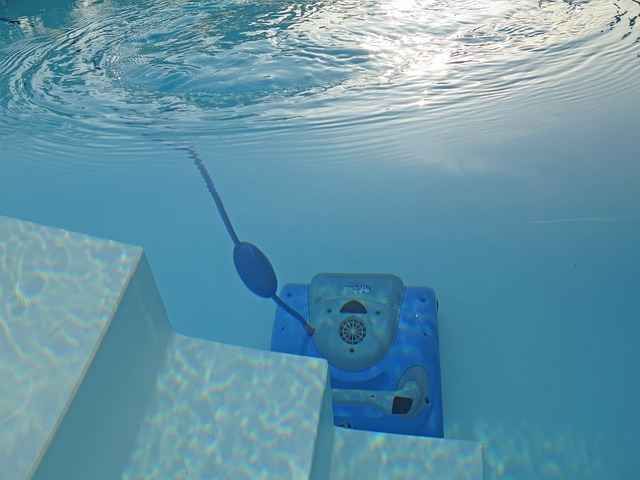
Cleaning a swimming pool
Published on
Average Read time: 1 minute 57 seconds
Cleaning a swimming pool is essential to maintain water quality, prevent algae growth, and ensure a safe and enjoyable swimming experience. Here's a general guide on how to clean a swimming pool:
Skim the Surface: Use a skimmer net to remove leaves, insects, and other debris floating on the surface of the water. This helps prevent the debris from sinking to the bottom of the pool.
Brush the Walls and Floor: Use a pool brush to scrub the walls and floor of the pool to remove algae, dirt, and other buildup. Pay special attention to areas with poor circulation, such as corners and steps.
Vacuum the Pool: Use a pool vacuum to remove dirt and debris from the bottom of the pool. There are different types of pool vacuums available, including manual, automatic, and robotic options.
Clean the Skimmer and Pump Baskets: Empty and clean the skimmer and pump baskets to ensure proper water circulation and filtration. Clogged baskets can restrict water flow and reduce the effectiveness of the filtration system.
Check and Maintain Water Chemistry: Regularly test the water chemistry using a pool water testing kit. Adjust the pH, chlorine, alkalinity, and other chemical levels as needed to maintain balanced water chemistry. This helps prevent algae growth and ensures swimmer comfort.
Shock the Pool: Periodically shock the pool by adding a high dose of chlorine or a non-chlorine shock treatment. This helps oxidize organic contaminants and maintain water clarity.
Backwash the Filter: If you have a sand or DE (diatomaceous earth) filter, backwash it according to the manufacturer's instructions to remove trapped debris and restore filtration efficiency.
Clean the Pool Deck and Surroundings: Sweep or hose down the pool deck and surrounding areas to remove dirt, leaves, and other debris. This helps prevent debris from being blown or tracked back into the pool.
Inspect and Maintain Equipment: Regularly inspect and maintain pool equipment, such as pumps, filters, and heaters, to ensure proper operation and prevent breakdowns. Replace worn-out or damaged parts as needed.
Cover the Pool When Not in Use: Use a pool cover when the pool is not in use to prevent debris from entering the water and to reduce evaporation, which helps conserve water and chemicals.
Skim the Surface: Use a skimmer net to remove leaves, insects, and other debris floating on the surface of the water. This helps prevent the debris from sinking to the bottom of the pool.
Brush the Walls and Floor: Use a pool brush to scrub the walls and floor of the pool to remove algae, dirt, and other buildup. Pay special attention to areas with poor circulation, such as corners and steps.
Vacuum the Pool: Use a pool vacuum to remove dirt and debris from the bottom of the pool. There are different types of pool vacuums available, including manual, automatic, and robotic options.
Clean the Skimmer and Pump Baskets: Empty and clean the skimmer and pump baskets to ensure proper water circulation and filtration. Clogged baskets can restrict water flow and reduce the effectiveness of the filtration system.
Check and Maintain Water Chemistry: Regularly test the water chemistry using a pool water testing kit. Adjust the pH, chlorine, alkalinity, and other chemical levels as needed to maintain balanced water chemistry. This helps prevent algae growth and ensures swimmer comfort.
Shock the Pool: Periodically shock the pool by adding a high dose of chlorine or a non-chlorine shock treatment. This helps oxidize organic contaminants and maintain water clarity.
Backwash the Filter: If you have a sand or DE (diatomaceous earth) filter, backwash it according to the manufacturer's instructions to remove trapped debris and restore filtration efficiency.
Clean the Pool Deck and Surroundings: Sweep or hose down the pool deck and surrounding areas to remove dirt, leaves, and other debris. This helps prevent debris from being blown or tracked back into the pool.
Inspect and Maintain Equipment: Regularly inspect and maintain pool equipment, such as pumps, filters, and heaters, to ensure proper operation and prevent breakdowns. Replace worn-out or damaged parts as needed.
Cover the Pool When Not in Use: Use a pool cover when the pool is not in use to prevent debris from entering the water and to reduce evaporation, which helps conserve water and chemicals.
By following these steps and maintaining a regular cleaning and maintenance schedule, you can keep your swimming pool clean, safe, and inviting for swimming.